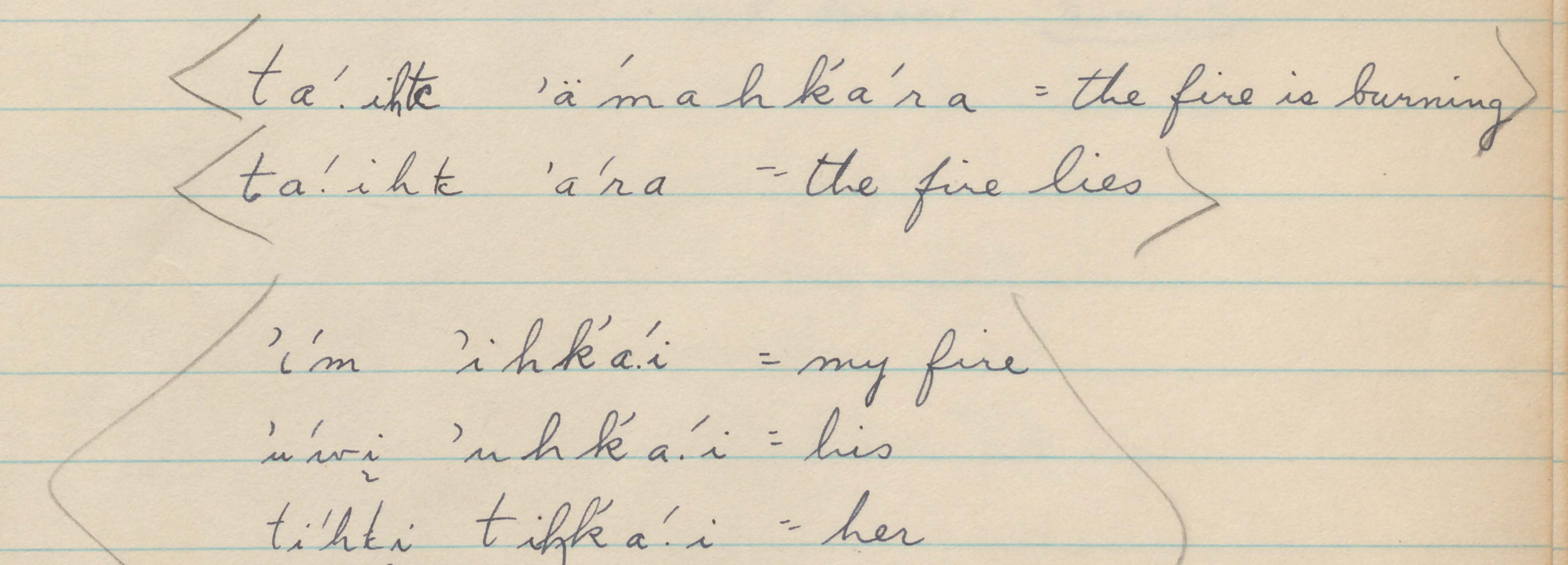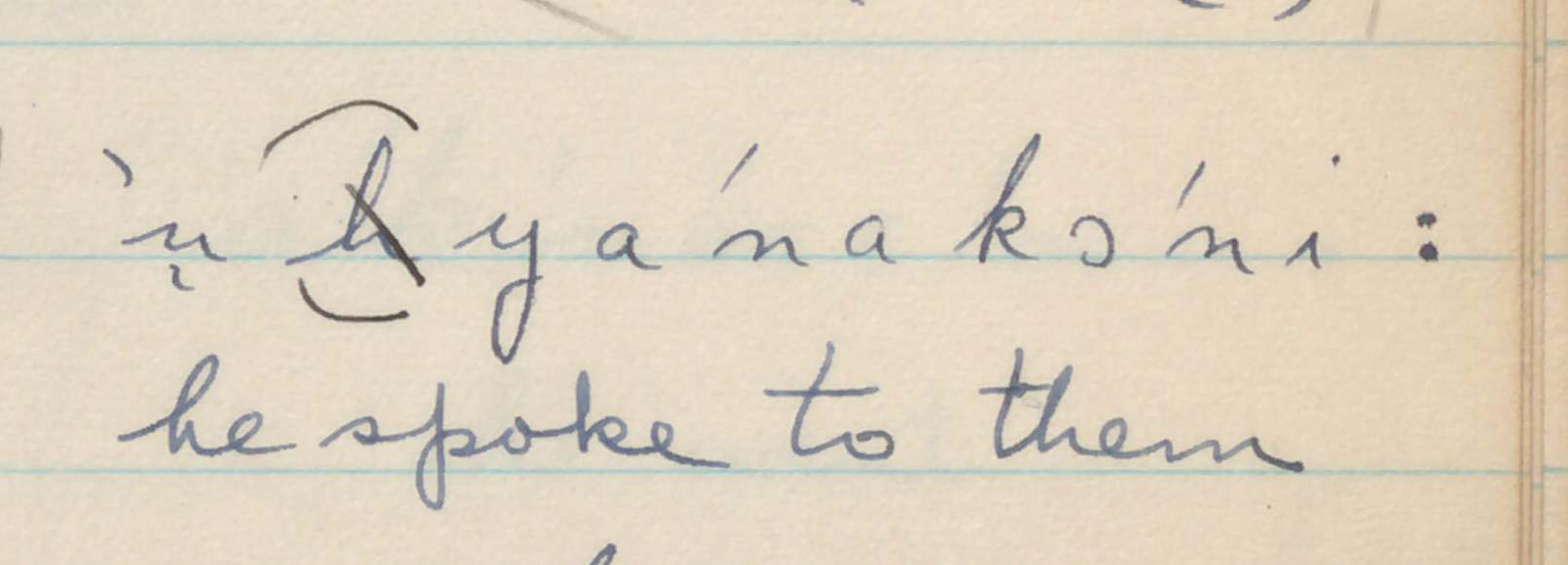Preaspiration in Tunica
by Patricia Anderson
Preaspiration in Tunica is marked with an \h\ before a consonant. We see it in words like lahpa (the verb for land a boat) and hihkut'E (rat) to name a few. The presence of a leading \h\ results in a breathy sound before the consonant.

Preaspiration is meaningful in Tunica. Consequently, tika and tihka mean different things ("big" and "to squeeze something until it bursts", respectively). There are many minimal pairs in Tunica, such as sapani and sahpani ("a cooling off of the weather" and "elastic"), kɔta and kɔhta ("gray" and "to build a fence"), and lepi and lehpi ("to explain" and "to shut or close").
However, not every word in Tunica has an aspirated pair. In the Notebooks, we see frequent corrections to preaspiration, presumably during a subsequent editing phase given that these corrections generally happen in a different ink.

Preaspiration is an important feature that the Tunica revitalization effort seeks to standardize and highlight when applicable; the variation found in the Haas notebooks informs these standardization decisions.
